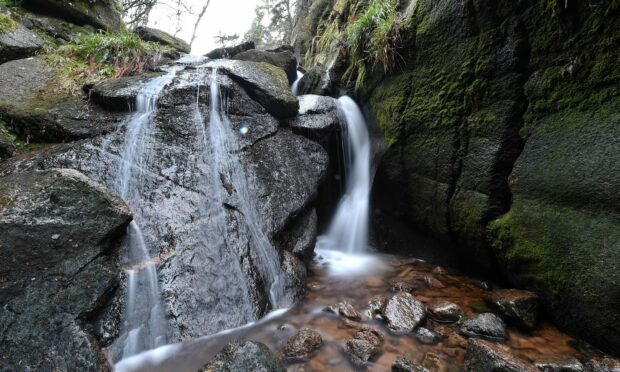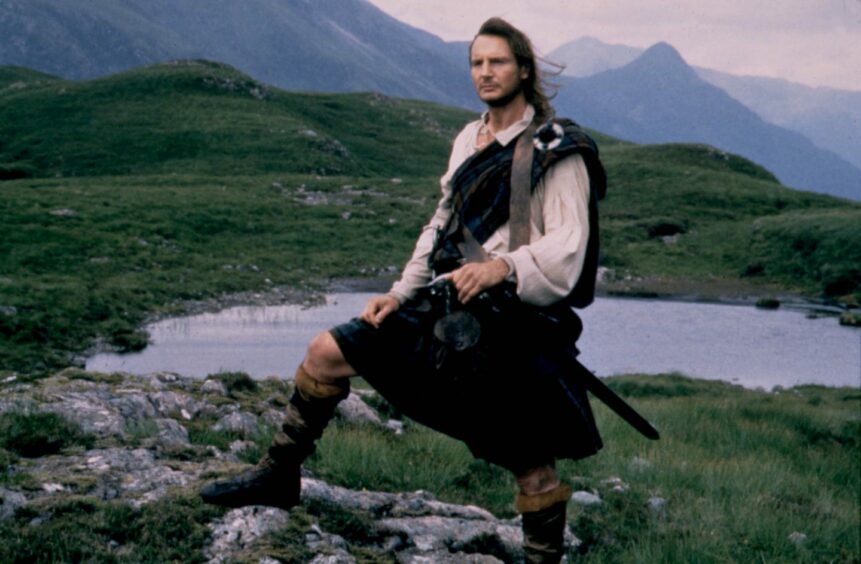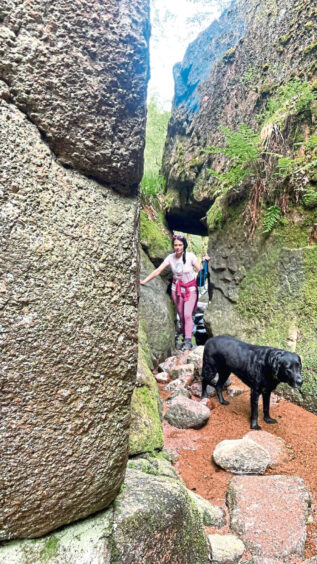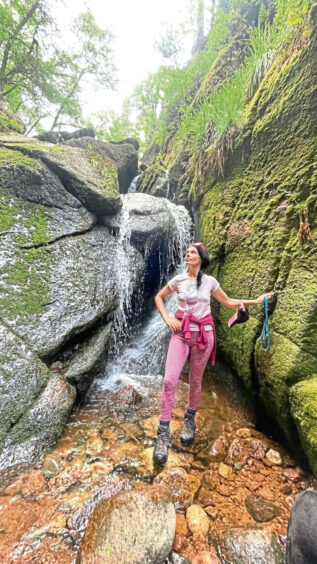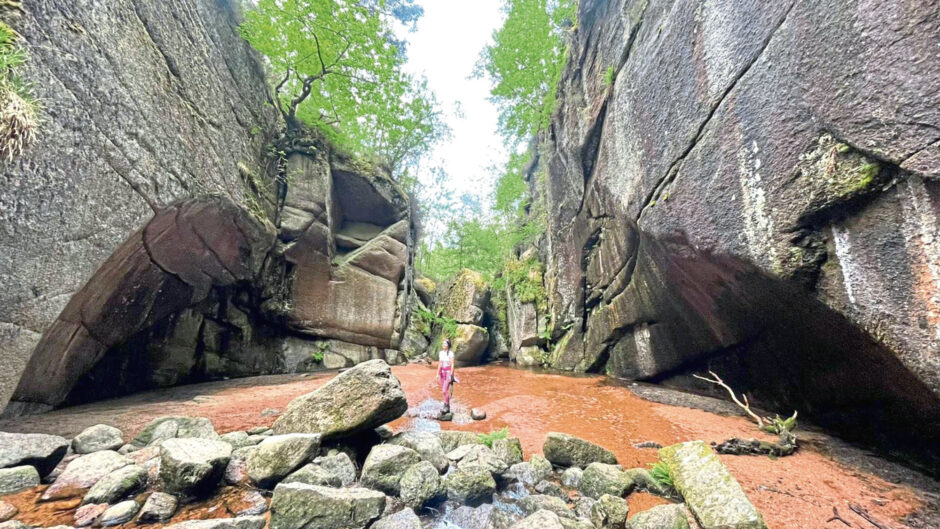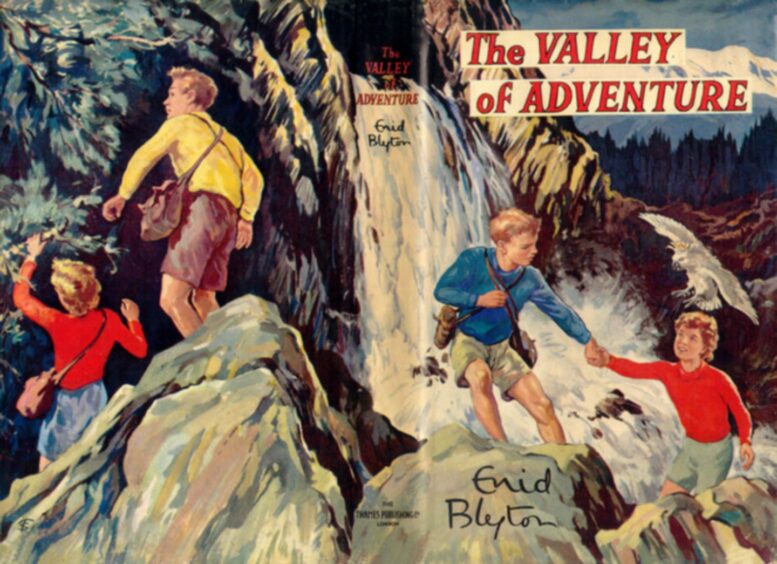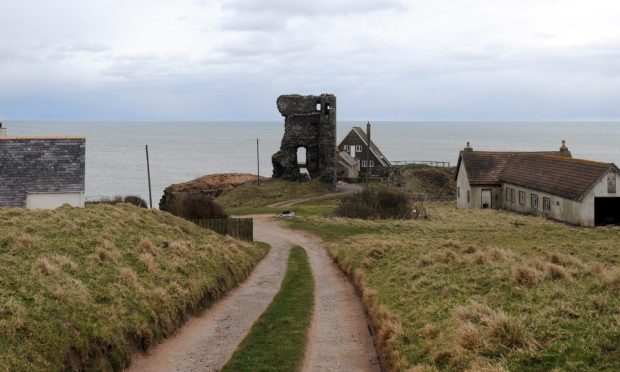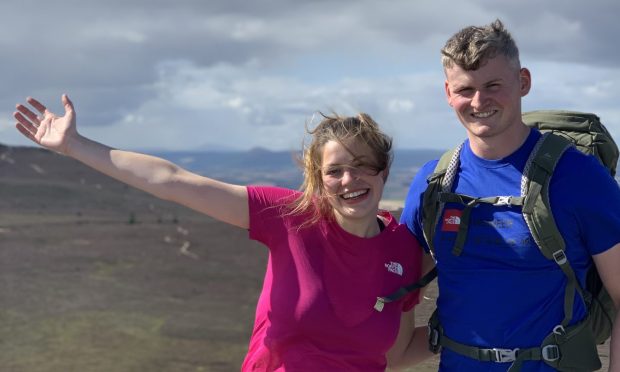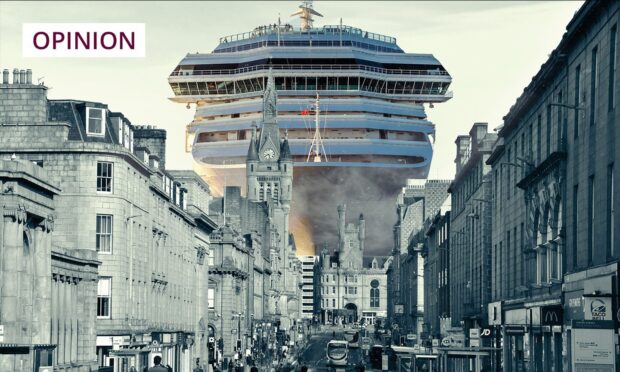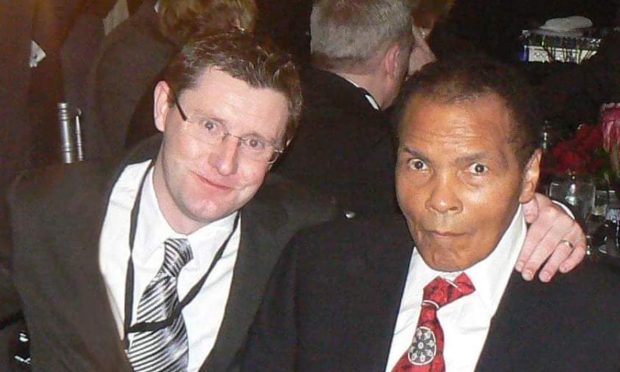Gayle explores the granite cauldron, waterfall and cave of Burn o’ Vat in Deeside and finds it steeped in myth and legend.
A cave behind a waterfall with a moss-covered floor and fronds of fern concealing the entrance.
It’s an enchanting location featured in Enid Blyton’s 1947 novel The Valley of Adventure and it’s a place I’ve dreamed of visiting ever since I read the book as a child.
A recent trip to the Burn o’ Vat in Deeside almost made that dream come true, although I didn’t find a network of tunnels leading to caves of echoes, stalactites or stars, as Blyton’s Jack, Dinah, Philip and Lucy-Ann did.
Nonetheless, I was blown away by the magic of the popular beauty spot and could well imagine that Scottish outlaw Rob Roy MacGregor, aka the Scottish Robin Hood, once hid here from the authorities.
ROB ROY LEGEND
Alas, that’s just a local legend, and while it’s an interesting prospect, it’s said to be more likely that the 17th Century outlaw hiding here was in fact Deeside’s own Patrick Gilroy MacGregor.
My own adventure began at the Burn o’ Vat visitor centre, within the Muir of Dinnet National Nature Reserve, two miles from the pretty village of Dinnet.
A waymarked path follows the burbling Vat burn upstream, crosses a green wooden bridge, and brings you to the entrance of the Vat.
It might appear that the way is blocked by craggy rocks and boulders but if you want to reach the glacial pothole of the Vat you’ll need to scramble over these and squeeze your way through a narrow cleft.
A word of advice – wearing flip flops or heels isn’t advisable here, even in summer. Be sensible and don your walking boots at least!
STEPPING STONES
Be prepared to get your feet a bit wet (isn’t that part of the fun?), but try not to slip and break a leg on the stepping stones.
There’s a jaw-dropping moment when you slide through the crevasse into the Vat, a deep, water-gouged bowl floored with red gravel and with smooth, granite walls that seem to close in as they tower above you.
You really feel as though the rock walls have swallowed you in their damp embrace!
At the far side of the huge natural amphitheatre, a cascading burn hides a cave and creates a gorgeous Blyton-esque waterfall.
You can walk through the water to get behind the falls, as I did, but you’ll almost certainly get soaked unless there’s a drought, and good luck finding any hidden treasure!
The pothole was formed by glacial meltwater at the end of the last ice age, 16,000 years ago, and it’s thought boulders and gravel became lodged in the river causing a torrent of water to spiral round and round until the grinding action carved out the underlying granite bedrock into what we know today as the Vat.
It’s been a popular attraction since Victorian times, probably because its location is in Royal Deeside, and has a long history as a hiding place for fugitives.
While the legend that the Vat offered sanctuary to Rob Roy MacGregor has been quashed as a myth, it’s been established that it was indeed used as a hideout from authorities by the notorious outlaw, bandit and cattle thief Patrick Gilroy MacGregor, aka Gilderoy.
Some refer to the shallow depression behind the waterfall as “Gilderoy’s Cave” as he is said on one occasion to have hidden here from pursuers along with his band of men when the burn was in spate.
According to an arrest warrant issued by the Privy Council in 1636: “They come in darkness of the night down to the country, fall unawares upon the houses and goods of His Majesty’s poor subjects and spoil them of their goods… to the disgrace of law and order.”
Landowners were charged to hunt, follow and pursue MacGregor and his gang “and never to leave off their pursuit til they be either apprehended or put out of the country.”
It wasn’t until 1658 – 22 years later – that MacGregor was finally apprehended and hanged.
GEOLOGICAL WONDER
If you feel you’ve had enough excitement checking out this geological wonder and its associated stories, you can follow the path back to the car park, or take a circular route, climbing up through trees, high above the Burn o’ Vat and onto a track boasting panoramic views over Loch Kinord and the Dee Valley.
A grassy, heathery track leads you back to the visitor centre through pleasant pinewoods and open countryside.
A trip to the Burn o’ Vat promises a fantastic adventure for anyone who enjoys scrambling over rocks, checking out enchanting caves and waterfalls, myths, legends and history.
- For more info on Muir of Dinnet, see https://www.nature.scot/enjoying-outdoors/scotlands-national-nature-reserves/muir-dinnet-national-nature-reserve
- Inspired to read – or re-read Enid Blyton’s The Valley of Adventure? Order a copy here.
